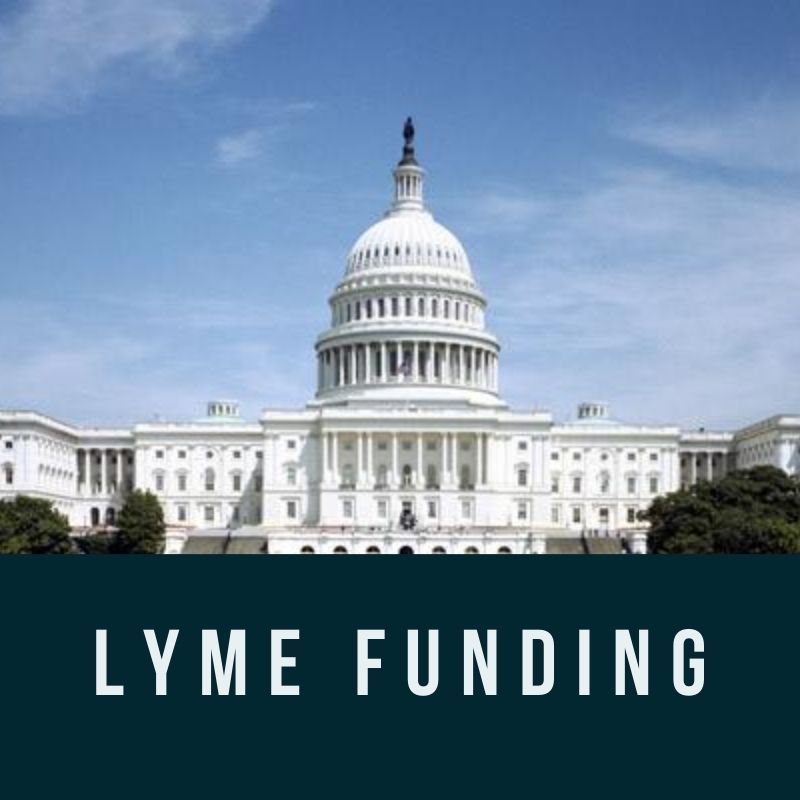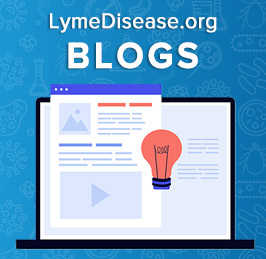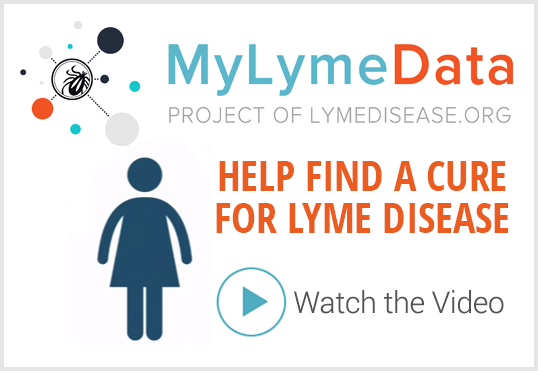House Appropriations Committee approves Lyme-related funding increases

By Bonnie Crater, Center for Lyme Action
Thank you to all the Lyme advocates for your consistent efforts to grow federal funding for Lyme and tick-borne conditions.
Last week, the House Appropriations Committee approved the Fiscal Year 2025 Department of Labor, Health and Human Services Appropriations (L-HHS) bill and provided descriptions of programs with significant new report language.
While the overall FY25 bill is $8.6B lower than FY24, our Lyme and tick-borne disease (TBD) funding levels continue to grow. In a year of overall lower funding, this is a big win.
Specifically, the House Appropriations Committee approved an increase of $25 million for Lyme and TBD research setting a minimum spend of $125M in FY25. Here’s the summary of the Committee approved funding:
- $125M – NIH NIAID Lyme and Tick-borne disease research (+$25M)
- $27M – CDC Lyme Disease Funding (+$0M)
- $5M – HHS LymeX (+$0M)
In addition to the boost in NIH funding, the Committee made several significant and very exciting additional instructions to HHS:
- CDC to review TBD website content
- CDC to create a report on Alpha-gal
- CDC to work on new diagnostic tests and focus on workers at high risk for TBD
- CDC to create a report on maternal fetal transmission of Lyme disease
- NIH, CDC, and FDA to consider the creation of National Network of Academic Research and Clinical Centers of Excellence for Tick-Borne Diseases
- ARPA-H to evaluate potential projects related to TBD
- NIH to provide a report on plans to address pediatric Lyme
- HHS to create a TBD office to coordinate cross departmental activities around the new National Strategy for Vector Borne Disease
If you want to read the details, just scroll to the bottom of this message to get the full text. You can read the entire bill by clicking on the links below.
The next step is for the House L-HHS Appropriations bill to go to the Rules Committee, add potential amendments, and be voted on by the full House of Representatives. The Senate is still in the early days of the appropriations process and we will keep you updated as we know more.
We continue to make progress thanks to your persistent advocacy. Let’s keep it going!
Committee on Appropriations
Report of the U.S. House of Representatives
DEPARTMENTS OF LABOR, HEALTH AND HUMAN SERVICES, AND EDUCATION, AND RELATED AGENCIES APPROPRIATIONS BILL, 2025
https://docs.house.gov/meetings/AP/AP00/20240710/117503/HMKP-118-AP00-20240710-SD002.pdf
Centers for Disease Control and Prevention
EMERGING AND ZOONOTIC INFECTIOUS DISEASES
p.59
Programs funded under Emerging and Zoonotic Infectious Diseases (EZID) support the prevention and control of infectious diseases through surveillance, outbreak investigation and response, research, and prevention. Within the total for EZID, the Committee recommends the following amounts:
Alpha-Gal Syndrome.—The Committee directs CDC, within 180 days of enactment of this Act, to develop a two-year plan (fiscal years 2025 through 2026) for conducting evaluation reviews of the information on its website for tickborne diseases (TBDs), including any TBD overviews and information on individual TBDs, including alpha-gal syndrome, the non-infectious allergic disease related to a tick bite that is less understood than other allergic conditions, and for developing educational materials for clinicians and the public for each TBD and tickborne condition, with priority based on disease burden, determined by prevalence and level of disability. The CDC is further directed, within 180 days of the enactment of this Act, to publicly release a report on alpha-gal syndrome, including prevalence, etiology, treatment, outcomes, and prognosis.
p.61
Lyme Disease—Lyme disease can be found in at least 80 countries around the globe and is endemic in many regions. In the U.S., Lyme disease is the most common disease transmitted from animals to humans. After years of uncertainty, CDC continues to note the number of reported Lyme disease cases in the U.S. is likely far below the estimated number of actual cases that are diagnosed and treated annually. According to CDC, in 2022, approximately 63,000 cases of the disease were reported, compared to estimates showing that more than 475,000 may be diagnosed and treated with Lyme disease annually in the U.S. The Committee continues to support CDC’s efforts to improve testing and treatment related to Lyme and other vector-borne diseases and encourages CDC to consider expanding activities related to the development of more accurate diagnostic tools and tests for Lyme disease and steps to educate high risk workers and their employers regarding the occupational risks of tickborne diseases.
Maternal Fetal Transmission of Lyme Disease.—Within 180 days of the enactment of this Act, the Committee directs CDC to provide a report on its plans to better understand maternal-fetal transmission of Lyme disease and gestational Lyme disease and plans to improve education for the public and for healthcare providers about the risks of Lyme disease during pregnancy and adverse birth outcomes. CDC is encouraged to identify resources required and potential obstacles to progress.
p.62
Southern Tick Associated Rash Illness.—The Committee directs CDC to publicly release a report on Southern Tick Associated Rash Illness (STARI) including its prevalence, the tick-vector or vectors causing STARI, and the progress in identifying the causative pathogen of STARI or any suspected non-infectious disease-causing mechanism. The Committee directs CDC to provide a briefing to the Committee on this topic within 180 days of the enactment of this Act.
Tick Borne Diseases External Engagement.—The Committee strongly encourages CDC to establish a panel of expert outside stakeholders to evaluate and review the Lyme disease information on its website for its inclusion of a balance of scientifically valid perspectives, primarily regarding the state of the science for diagnostics and treatments. The stated goals and purposes of the review and the identity of review participants, including the balanced panel of experts, including experienced TBD clinicians, researchers, and educators, should be fully transparent.
National Institutes of Health
p. 80
The Committee includes specific funding allocations for several initiatives and activities detailed in the institute- and center-specific sections below. For ease of reference the prior institute and center names have been maintained in the report language that follows. The funding amounts shown for each institute or center, reflect the proposed new structure, and are comparably adjusted to fiscal year 2024, the fiscal year 2025 budget request, or Committee proposed funding for fiscal year 2025.
p.94
Lyme and Other Tick-Borne Diseases.—The Committee includes not less than $125,000,000 for NIH research into Lyme and Other Tick-Borne disease research, an increase of $25,000,000 over the fiscal year 2024 enacted level. NIH is encouraged to support research to better understand the causes of tick-borne diseases, including alpha-gal syndrome and allergic or immune/inflammatory conditions triggered by tick-borne infections, to support research on Lyme disease and emerging tick-borne pathogens, and to support the development of reliable diagnostics and therapies to address this growing health concern that affects more than 476,000 Americans annually. The Committee encourages NIH to periodically review progress on activity to address tick-borne infection-triggered chronic illnesses, such as long COVID, long Lyme, Bartonella henselae, West Nile virus, and multiple sclerosis and to include a status report in the fiscal year 2026 congressional justification. In addition, the Committee encourages NIH, in consultation with CDC and FDA, to consider the potential benefits of establishing a National Network of Academic Research and Clinical Centers of Excellence for Tick-Borne Diseases.
NATIONAL INSTITUTE ON INNOVATION AND ADVANCED RESEARCH
p.109-10
The report language that follows includes references to the National Institute of Biomedical Imaging and Bioengineering (NIBIB), the National Center for Advancing Translational Sciences (NCATS), and the Advanced Research Projects Agency for Health (ARPA–H)….
Advanced Research Projects Agency for Health (ARPA–H) The Committee includes $500,000,000 for this activity, which is $1,000,000,000 below the fiscal year 2024 enacted level…
p.111
Lyme and Other Tick-Borne Diseases (TBD).—The Committee recognizes the value of and encourages ARPA–H to evaluate the potential benefits of supporting research and development programs and projects related to TBD. Examples of potential research and development activities may include research related to TBD diagnostics and Bartonella unit.
OFFICE OF THE DIRECTOR (NIH)
p.118
Lyme and Other Tick-Borne Diseases.—The Committee encourages the Office of the Secretary to work with the Director of NIH to evaluate the potential benefits of expanding the TBD portfolio to other institutes and centers in addition to NIAID. Because of the profound neurologic involvement of TBD, such as Lyme disease, NINDS and NIMH may make major contributions to the study of TBD, such as developing novel treatments for neurologic symptoms, including severe neurologic symptoms in children. Because of the severe impacts of TBD on children, NICHD may also greatly enhance NIH accomplishments in developing tools to manage pediatric cases of TBD.
p.122
Pediatric Lyme Disease.—As part of the fiscal year 2026 congressional justification, the Committee requests an update on the agency’s plans to advance research on pediatric Lyme disease, including the impact on children who are infected in utero. The Committee encourages NIH, including NIAID, NINDS and NIMH, to increase study of neurologic symptoms of Lyme disease, including in children, increasing surveillance of neurologic symptoms and investigating novel treatments of neurologic symptoms.
OFFICE OF THE SECRETARY (HHS)
GENERAL DEPARTMENTAL MANAGEMENT (GDM)
LymeX
p.185
p.190
Lyme and Other Tick-Borne Diseases.—The Committee strongly encourages the Secretary to establish within the Office of the Assistant Secretary for Health a TBD coordinating office to track, monitor and provide technical assistance on TBD activities throughout HHS, including its operating divisions, and to serve as an HHS-wide facilitator for TBD activities. The coordinating office would be able to monitor and report to the Secretary on implementing the ‘‘National Public Health Strategy to Prevent and Control Vector-Borne Diseases in People.’’ The Committee further encourages such office to establish a program for temporary agency/ stakeholder panels or commissions to address a need or gaps related to TBD goals and objectives in an HHS agency or across agencies. The agency/stakeholder panels could consist of a range of stakeholders, similarly to the TBD working groups, except on a smaller scale, to operate for a short period of time, e.g., 120 days, to address a particular need or gap in the TBD knowledge base or TBD activity. The overarching purpose is to facilitate transitioning products to patients, health care practitioners, researchers, academia—including Vector-Borne Diseases (VBD) Centers of Excellence, industry, State, and local governments. In addition, the Committee urges the Office of the Secretary and NIH, in consultation with CDC and FDA, to enter into discussions on the potential benefits of establishing a National Network of Academic Research and Clinical Centers of Excellence for Tick-Borne diseases.




















We invite you to comment on our Facebook page.
Visit LymeDisease.org Facebook Page